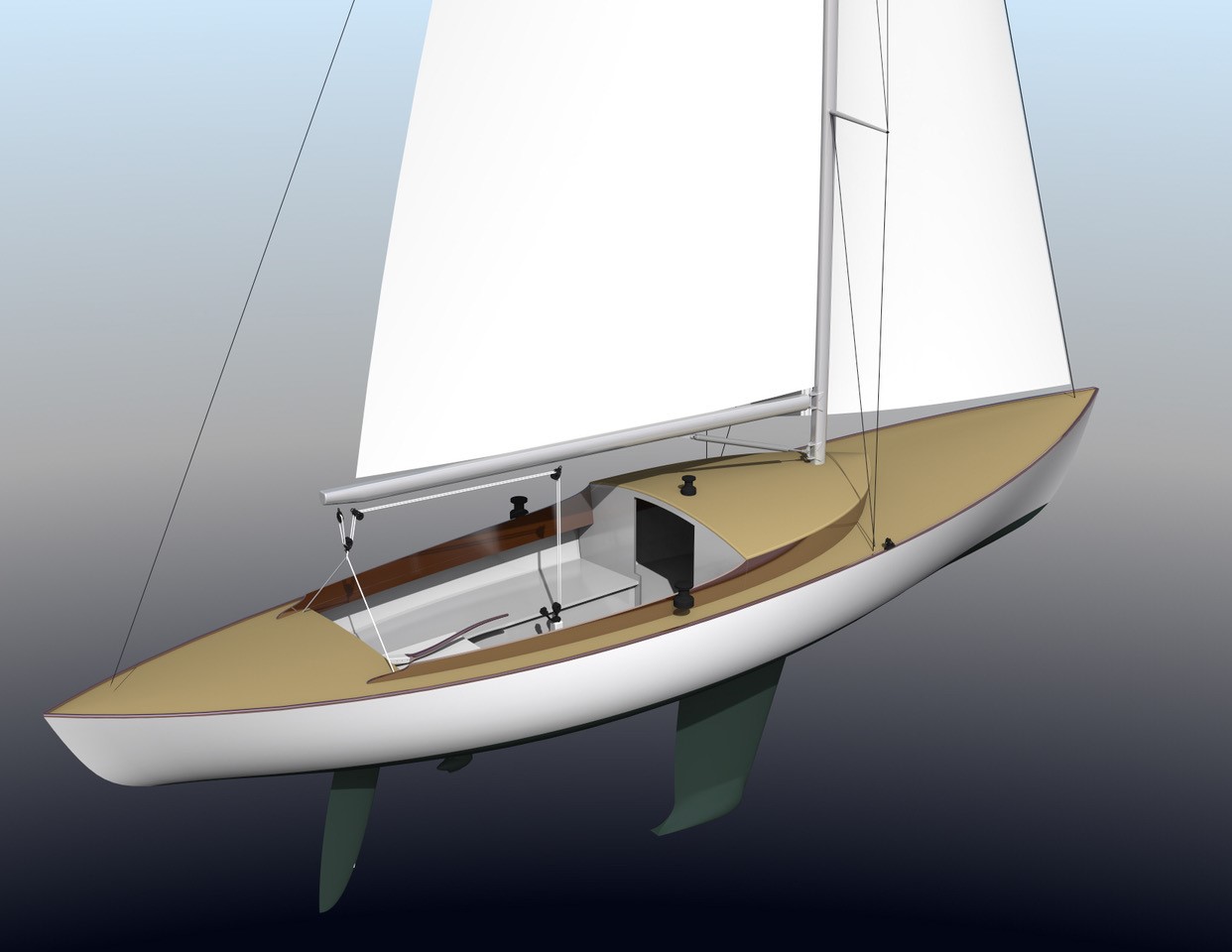Rosie: A Sweet Spirit of Tradition Daysailer
When an owner’s dreams collide with superior design wonderful sailing boats result

The genesis of an excellent design is as varied as the number of designs we’ve created over the years. This design began when a long-time friend and client, with a lifetime of sailing and owning various craft approached us to re-imagine the Herreshoff Rozinante yawl. He owned two of the Rozinantes at one time or another but understood that in a new design he would be able to merge the looks he admired of L. Francis’s masterpiece with the modern performance realized in a 100 years of sailboat design evolution
Rozinante is the canoe-stern ketch that’s become iconic as the archetype of the classic camper-cruiser. Influenced by Nantucket whaleboats and the protagonist of L Francis’s well-loved book The Compleat Cruiser, she is a slippery thing, narrow and sleek, with strikingly hollow waterlines streaming from stem to stern. The coaming terminates in sharp points at each end and encloses a deep, narrow cockpit with minimal cuddy that somehow provides space for two to sleep, compact canvas sling seats, and just enough room for a camp-stove and a cedar bucket.
Rozinante’s simplicity inspired our new Rosie, but the higher performance of more modern Spirit of Tradition craft had sharpened our client’s appetite for speed and weatherliness. To deliver this, Rosie is longer, beamier, and lighter in displacement, and her rig and underbody stray far from Rozinante’s.

A simple fractional sloop rig goes to windward with more promise and agility than a ketch rig, and the sail plan can avail itself of all our modern go-fast tools: an adjustable backstay for mast-bending and mainsail flattening; a rigid boom vang to support the boom and control twist; in-haulers on the non-overlapping jib for super-close sheeting angles; and a powerful masthead kite set on a furler at the stemhead. We eliminated the mainsheet traveler in favor of a fixed bridle to lift the tackle high, close to the boom and added a barney post in the cockpit for ergonomic mainsheet control of the 3:1/6:1 purchase. In the interest of cost containment, a tapered aluminum spar will suffice, but a carbon-fiber spar would provide peak performance if desired.
Rosie’s thin, deep, lead keel with a small beavertail bulb is a high-lift, low-drag foil and her rudder is a standard molded blade from JEFA, with a modern efficient foil section and excellent bearings for a featherlight touch. Displacement of about 5,200 lb (2,360 kg) shaves significant weight from Rozinante, with an LOA and LWL about 10 percent longer. The beam is still narrow at 7’ 7” (2.3 m) but will add stiffness compared to Rozinante’s 6’ 4” (1.9 m) and a bit of interior volume.
Like Rozinante, Rosie’s cockpit sole is too low to permit self-bailing, but unlike her older aunt, Rosie’s cockpit is watertight with a sump, so any water that enters can be pumped back overboard without flooding the bilge. The deep sole allows a comfortable cockpit with taller backrests and places the crew close to the water for a terrific sense of speed. An engine box is placed aft under the tiller, where it won’t interfere with passengers’ feet and it’s large enough for a sail-drive diesel. This slippery day-yacht would be a delight with the added simplicity of electric propulsion. Of course, L. Francis used an oar for his auxiliary and no motor was required.

Construction is outlined as wood-strip-composite: cedar strip planking providing longitudinal strength and core, with biaxial glass fiber inside and out. This is economical and sturdy while minimizing the amount of internal structure required to support the hull skin, simplifying construction and reducing cost. The longitudinally-framed plywood deck is simple, durable, and lightweight.
Twin settees provide a great place to cozy up in a fogbound harbor or stretch out for weekend cruising. A cedar bucket (or porta-potty) handles plumbing needs. A boom tent with bug screens would open the cockpit to expand cruising amenities.
Pocket cruiser for sure, Rosie will shine in her primary role as a spur-of-the-moment daysailer. She’s simple to get underway, will ghost along in the smallest whisper of a dying sea breeze, or use her size and power to romp playfully through the gusts and chop of a quick-rising storm front. The boat, the crew, neither will want to pack it in regardless of conditions, but when that time comes the process is simplicity itself leaving all planning the next adventure onboard.